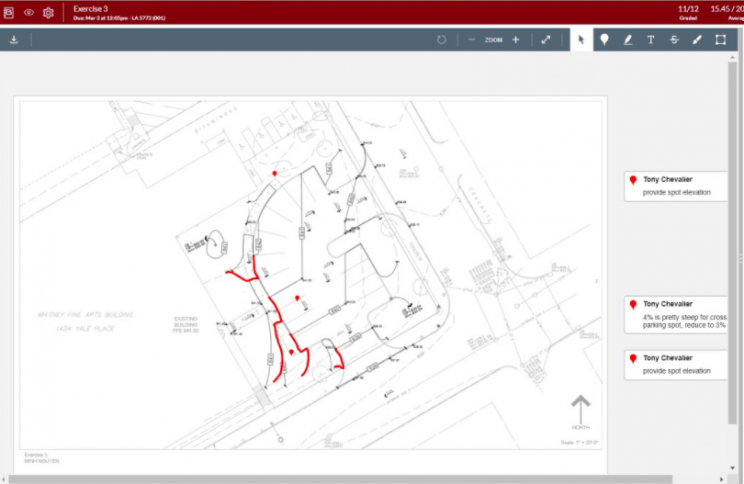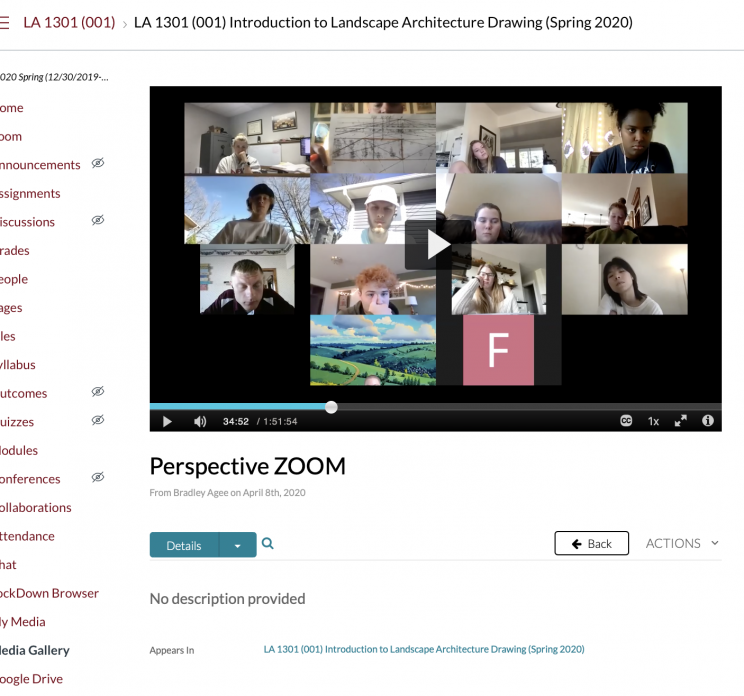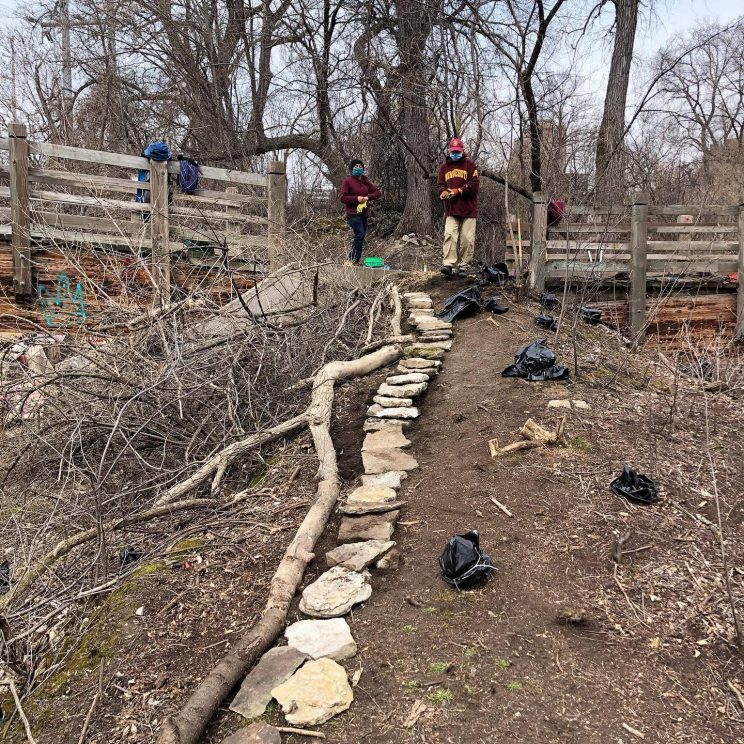Change is intrinsic to the field of landscape architecture, which has prepared the Department of Landscape Architecture to meet the rapid changes we are facing on a daily basis. As we begin to wrap up the spring semester, I want to share how our department has been adapting and responding.

The following post was written by Department of Landscape Architecture Head Joe Favour.
Teaching and learning remotely
Prior to the shutdown, our faculty were preparing to overhaul our MLA curriculum in the coming academic year and considering how online technology could be further adopted as part of the redesign. Moving to remote teaching has provided an opportunity to evaluate our capabilities in these areas.
A few trends have emerged since this transition. In my own course, Landscape Infrastructure and Systems 2, we have been using the University’s course management platform, Canvas, to create online rubrics and directly comment on digital uploads of assignments. These functions enable very individual and targeted instruction, which has improved our feedback loop. Other instructors in the department have had similar experiences with technology in their courses. Adjunct Assistant Professor Tony Siebenaler-Ransom writes, “Desk-crits over Zoom have allowed for a more personal connection with each student. With some of the classic arrangement of the classroom hierarchy and formality broken, we have been better able to tailor our feedback and coaching to each student.”
Recorded demonstrations and lectures online also have their advantages. In a traditional classroom environment, students are expected to listen, take notes, and ask questions, but they cannot go back later and replay that classroom experience. Many instructors are now recording or voicing over their lectures and zoom sessions and uploading them to the Canvas course site. This allows students to watch, stop, rewind, and replay the content, then jump online to ask specific questions or get feedback during class time. With these tools, students can create their own learning rhythms, each with unique benefits and limitations. As the semester winds down, our faculty are evaluating these positives and trying to understand the drawbacks so we can improve online instruction as a tool in our curriculum.
Adapting studio culture
In the void of personal contact, students are seeking to re-create the studio cohort virtually. Tony remarked, “It’s often hard to show students the resources their peers provide to advancing thinking and sparking new ideas in the studio. We have had many requests (in the online environment) for more opportunities to share and converse with classmates about project work, challenges, and what they are experiencing. Using the Zoom breakout rooms and popping into them to listen to the conversations, it’s clear students see the value and benefit from the feedback of their peers. It’s great to see, and a stronger argument for the power of the studio than I could ever make to them.” Lecturer and Director of Undergraduate Studies Brad Agee agrees, adding that students have shown resilience in the face of the pandemic. “This has been a challenge met by student cooperation and their own initiative as self-starters. The students have risen to the occasion and continue to engage robustly in online work. I think it is a great example of resiliency, improvisation, flexibility, planning, and mutual cooperation.”
Capstone presentations
Another aspect of the virtual environment is the increased ability of our faculty to engage with reviewers from the profession and other universities. Our MLA capstone project presentations will be spread out over the week of May 4th in 2-hour blocks. This schedule has allowed Professor Rebecca Krinke and Assistant Professor Jessica Rossi-Mastracci to secure a mix of reviewers from across the nation, including faculty from the University of Washington, UC-Berkeley, and USC, as well as practitioners from Field Operations, Agency Landscape + Planning, and several local firms/organizations. Assistant Professor Karen Lutsky’s MLA studio will also feature reviewers from both local offices and cities such as Chicago, Philadelphia, and Columbus, OH. Both Rebecca and Karen, as well as Professor John Koepke, have already participated virtually in the reviews of other universities like Ohio State, Iowa State, Cornell, and Carleton (Canada).
Making time to give back
In addition to these virtual developments, our students have taken the initiative to volunteer and help improve a valued public space in Minneapolis during this time. David Hedding, a leader in the student group S.O.I.L. (Student Objectives in Landscape), wrote of the students’ work at Father Hennepin Park on the Mississippi Riverfront. “The Marcy Holmes neighborhood association has been spearheading a lot of volunteer work in the Mississippi Gorge. Xcel Energy temporarily shut off the spillway, which gave us the opportunity to clean up the river bed and haul out buckthorn that was cut last year by volunteers. The neighborhood has been working with the Park Board to give us permission to work down there in accordance with the stewardship plan they’re implementing. This is part of the Cover It Up research program, and there is a site in the lower park that will be used to further conduct that research.”
Beyond the cleanup, students have also been able to make site improvements like redefining trails and adding seating using found materials. David further writes that “A lot of the stonework is to try and create trail designators to prevent future erosion. We’re all super proud of a bench we constructed. Each time we’ve gone back we’ve seen people sitting on it. What a great feeling to see your work being utilized!”
We still have a lot to learn about the changes needed to deal with this new digital environment and social isolation, but the Department of Landscape Architecture’s students, faculty, and staff are up to the challenge. We are doing what landscape architects have always done: embracing change.
Joseph R. Favour, ASLA
Department Head + Associate Professor in Practice
Department of Landscape Architecture
College of Design
Longtime professor, mentor, and leader in the Twin Cities design community Joe Favour (B.L.A. ’92) began his appointment as head of the Department of Landscape Architecture this June.
Like industries and higher education institutions across the globe, the Retail Merchandising Program has had to quickly shift to working and learning remotely. Through the use of new technology and ingenuity, retail merchandising faculty, staff, and students have come together to embrace this new learning landscape.
When the decision was made to shift classes to remote learning, faculty, students, and staff undertook one of the biggest teaching and learning challenges to date. As the semester wraps up, our interior design instructors share how they adapted their spring classes to remote learning, the challenges they faced in the process, and what they learned through the experience.








